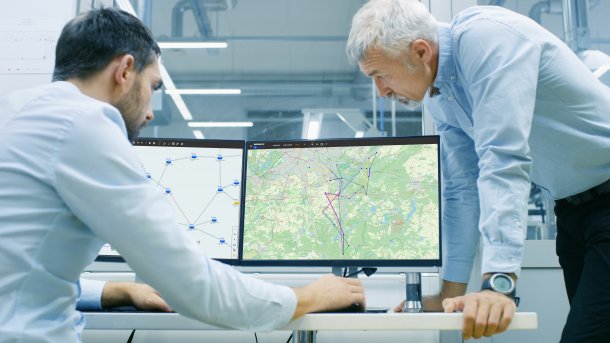Mobile communications: The O2 network gets a digital twin
Telefónica Deutschland can draw on a digital twin of its own mobile network for network planning and fault management.

(Image: Telefónica Deutschland)
Telefónica Deutschland has created a "digital twin" of its mobile network that shows the current state of the network and can help analyze problems. The tool resembles an interactive map of the network and was developed internally, the company announced on Tuesday.
The digital twin shows the status of the network's 28,000 antenna sites, routers and other hardware as well as over 50,000 fiber optic or radio relay links in real time. With the help of the software, Telefónica's network technicians can see in detail how the individual components are working and how the network is utilized.
"Real-time information and routes"
"The digital network twin provides us with comprehensive real-time information and routes - like a map app for the network," explains CTO Mallik Rao. "We work ten times faster with the self-developed application than with previous tools. We can optimize our network in a more targeted manner, better identify performance restrictions and identify alternative transport routes more quickly."
Telefónica Deutschland also wants to be able to react more quickly to disruptions with the tool. The digital twin can be used to simulate failure scenarios and various solutions - for example, which routes are suitable for bypassing failed hardware and how they cope with additional load. In an emergency, the digital twin then suggests sensible alternative routes.
The company also hopes to gain insights into how to cope with the growing volume of data on the network. According to the company, mobile data usage in O2's network is increasing "exponentially". In 2023, the network will have processed 4.8 billion gigabytes of mobile data.
A digital twin is the digital representation of a physical object or process. This digital image makes it possible to carry out simulations and analyses without affecting the real object. A digital twin can be built for machines, real estate or immaterial processes or even entire cities. It combines all information and functions.
(vbr)